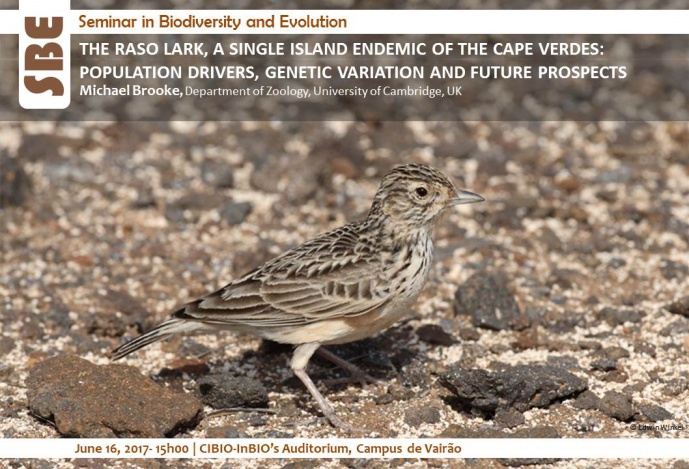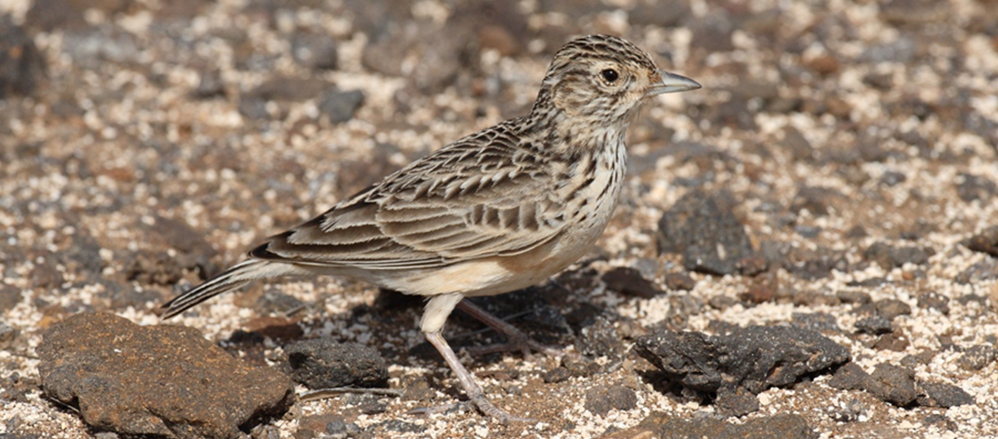THE RASO LARK, A SINGLE ISLAND ENDEMIC OF THE CAPE VERDES: POPULATION DRIVERS, GENETIC VARIATION AND FUTURE PROSPECTS


This talk will describe how, during the course of our 2002-2016 study, the population of the Raso lark Alauda razae on the 7 km2 islet of Raso has fluctuated between a minimum of 65 in 2004 and a maximum of 1550 in 2011. These changes are largely driven by more reproduction in wetter years. There is very little signal of an effect of either rainfall or population size on adult survival. Despite the bottlenecks through which the population has passed, both recently and presumably also in the past, genetic variation is only slightly lower than that of the massively more widespread sister species, the Skylark A. arvensis. The implications of this finding for a future conservation translocation to a nearby island in the Cape Verdes will be raised.
Michael Brooke, Curator of Birds in the University Museum of Zoology, Cambridge, became interested in birds in his teens. This led onto an ornithological career spanning some 40 years. Starting as warden of Skokholm Bird Observatory in Wales, where he did his doctorate on the Manx shearwater, he has been based first at Oxford University and latterly at Cambridge University. He has now studied ecology and conservation of birds in around 60 countries, both hot and cold. His special enthusiasm for seabirds and islands has provided the legitimate impetus for visits to some of the world's remotest islands. Although the Raso lark work does not involve seabirds, it has allowed 15 visits to the wonderfully barren island of Raso in the Cape Verdes.
[Host: Martim Melo, Tropical Biology]
Image credits: Edwin Winkel